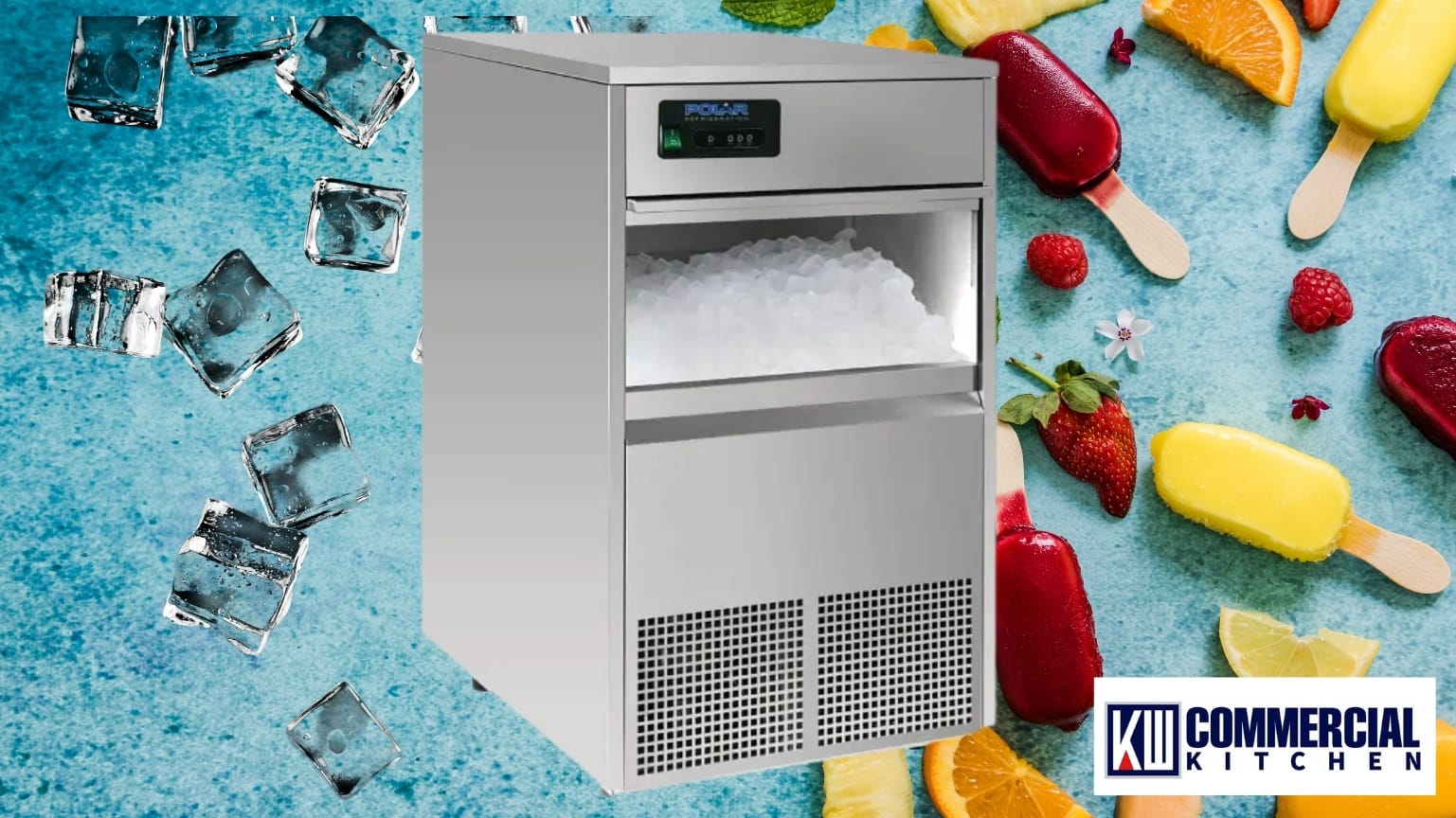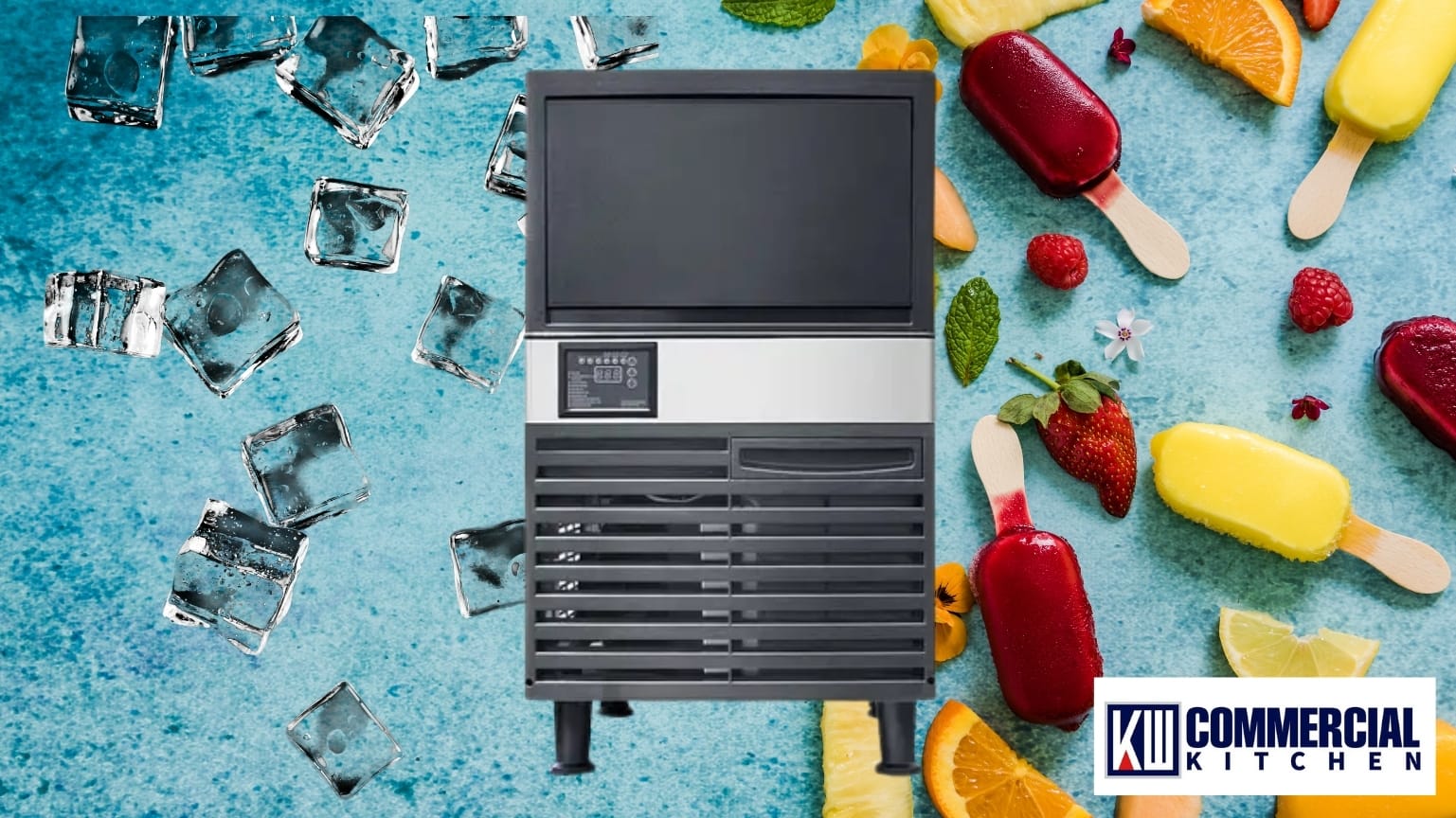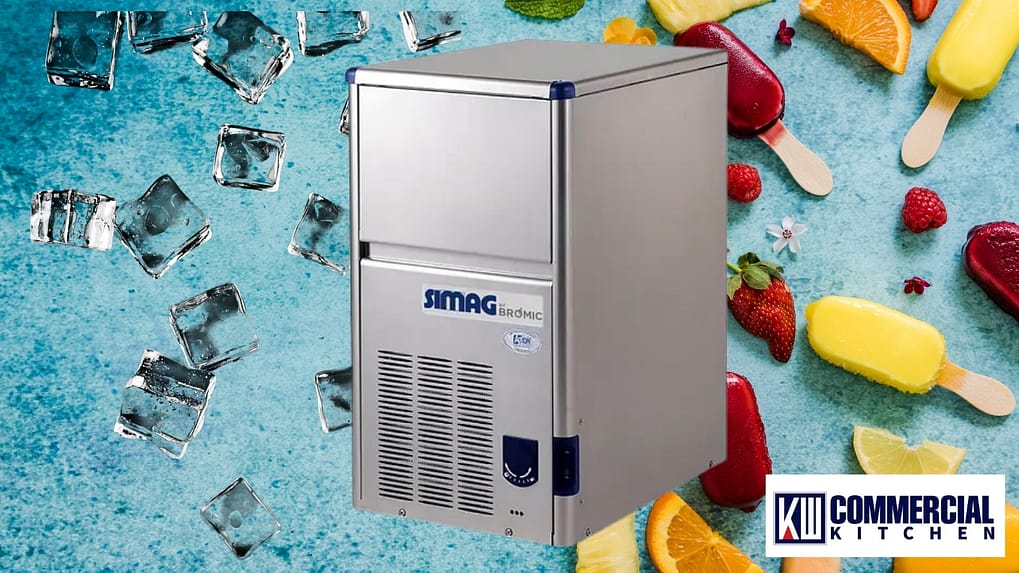Commercial Ice Machine Safety Playbook: Water Filtration, Cleaning SOPs & ‘Ice Is Food’ Rules (Australia)
One idea changes the way you run summer service: in Australia, ice is legally treated as food. That means the water going in, the surfaces it touches and the hands and tools that move it must meet the same standards you use for any ready‑to‑eat item. Get that right and you protect flavour, raise harvest consistency, extend machine life and stay audit‑ready.
This field guide translates FSANZ standards into day‑to‑day practice, shows how to choose the right water filter for chlorine/chloramine and scale, and gives you verification‑friendly cleaning logs your team can run without drama. It also routes you to safer front‑of‑house handling with Ice Dispensers & Crushers when that’s the smarter move.
1) Ice = Food: what that means for your business
Australian law requires food businesses to make and keep food safe. In practice that means:
- Standard 3.2.2 (Food Safety Practices & General Requirements) — staff skills/knowledge, contamination control, cleaning & sanitising of food contact surfaces (your ice contact surfaces count). [Source]
- Standard 3.2.3 (Food Premises & Equipment) — your equipment must be cleanable, maintained and located to minimise contamination. [Source]
- Standard 3.2.2A (Food Safety Management Tools) — rolling in across jurisdictions; requires evidence of training/records for specific activities. Ice handling and cleaning records fit cleanly into those log expectations. [Source]
- State guidance (e.g., Queensland Health) explicitly states ice is food, with handling and cleaning advice that mirrors the national standards. [Source]
- Keep a dedicated ice scoop (food‑grade, smooth, no cracks) and store it in a protected holster or outside the bin in a clean, covered container. No hands, no glassware in the bin.
- Position a handwash basin near ice stations to enable correct behaviours during service.
- Run documented cleaning & sanitising frequencies with sign‑off. Logs make you audit‑ready under 3.2.2A and help new staff do the right thing on day one.
2) Water quality first: filtration that actually fixes problems
Two chemistry realities drive flavour and machine performance:
- Disinfectants (chlorine/chloramine) protect the public water supply but can leave taste/odour and react with carbon differently. Catalytic carbon is often required for chloramine. The Australian Drinking Water Guidelines recognise these disinfectants as common residuals. [Source]
- Hardness & alkalinity create scale on evaporators and in water paths, slowing harvest and forcing earlier cleaning. Scale is a food safety and an efficiency problem. Manufacturers warn about output losses and poor cube quality when scale/biofilm builds. [Source]
2.1 Filter media & when to use them
| Problem you taste/see | Likely cause | Filter/media that works | Notes |
|---|---|---|---|
| Pool‑like taste/odour | Chlorine | Activated carbon | Standard carbon blocks remove free chlorine effectively. |
| Medicinal/bitter aftertaste even after carbon | Chloramine (chlorine + ammonia) | Catalytic carbon (enhanced chemisorption) | Look for “chloramine rated” on the cartridge spec. |
| Chalky deposits, frequent descales | Hardness (Ca/Mg), high alkalinity | Scale inhibitor (polyphosphate) or blended softening cartridge | Inhibitors keep minerals in solution; softening exchanges Ca/Mg for Na/K (watch taste & warranty guidance). |
| Cloudy cubes with fine particles | Suspended solids, rust | Prefilter 1–5 micron | Protects the carbon stage from premature clogging. |
Micron rating: 1–5 µm protects valves/orifices without throttling flow. Sub‑micron blocks polish taste but can starve machines of inlet pressure if undersized. Always check the inlet pressure/flow spec on your machine’s data plate.
2.2 Sizing the filter to your harvest
Cartridges are rated in litres (and sometimes “grains” for hardness). Use your machine’s published water consumption from the manufacturer’s spec sheet (don’t guess; cube and flake machines differ).
- Daily water‑through‑filter (L/day) = machine’s water use per hour × hours of ice‑making per day.
- Cartridge life (days) = filter capacity (L) ÷ daily water‑through‑filter (L/day).
- For hardness cartridges rated in grains: 1 grain = 17.1 mg/L as CaCO3. Required capacity (grains) ≈ (hardness mg/L ÷ 17.1) × total litres you’ll push before change‑out.
Pro tip: set the change‑out in your diary at 80–85% of the theoretical life. That buffers seasonal spikes and keeps taste consistent. Log the change date and the meter reading if your head includes one.

3) Cleaning & sanitising cadence (with logs)
FSANZ requires food contact surfaces to be effectively cleaned and sanitised. Your ice machine has three risk zones: (a) water path/evaporator, (b) bin interior & gaskets, (c) handling tools/dispensers. Combine frequency (below) with a log that a supervisor signs. [Standard 3.2.2] • [QLD Health]
3.1 Frequencies that work in Australian venues
- Each shift — wash hands, use scoop only, keep scoop in protected holder; wipe splash areas around dispensers with food‑safe sanitiser.
- Daily close — empty meltwater tray; wash & sanitise scoop/holder; wipe bin door gaskets; record any unusual odours or slow harvest.
- Weekly — wash, rinse, sanitise bin liner/walls, baffle and door; clean external air inlets/filters per the manual.
- Quarterly (or per manufacturer) — descale & sanitise the water circuit and evaporator following the OEM procedure (no “near enough” chemicals). Post‑cleaning, discard first harvest and taste‑check.
3.2 One‑page cleaning & handling log (FSANZ‑aligned)
| Date | Task | Chemical / Dilution | Done by | Supervisor sign | Notes / faults |
|---|---|---|---|---|---|
| Daily | Scoop cleaned, holder sanitised, gaskets wiped | Food‑safe sanitiser (per label) | |||
| Weekly | Bin liner/walls/baffle wash–rinse–sanitise | Detergent + sanitiser | |||
| Quarterly | OEM descale & sanitise cycle completed | OEM descaler + sanitiser | Harvest verified; taste OK | ||
| Filter | Filter cartridge changed | Type / capacity | Next change due: ____ |
Keep this alongside your food‑safety records. It satisfies the “skills and knowledge” and “evidence of control” expectations that auditors look for under 3.2.2/3.2.2A. [FSANZ guidance] • [3.2.2A overview]
4) Safer dispensing & transport (reduce cross‑contamination)
Every time hands or glassware touch the bin, risk rises. If you’re moving a lot of ice, a self‑dispensing head or a countertop ice dispenser removes that hazard pathway almost entirely, because the operator never reaches into a bin. For runs to FOH bars or pool decks, use covered ice caddies and dedicated scoops. Explore options in Ice Dispensers & Crushers.
5) Taste & yield troubleshooting
| Symptom | Likely cause | Fix | Verification step |
|---|---|---|---|
| Chlorine/“pool” taste | Free chlorine not removed | Ensure carbon stage is in place & within life | Taste test after purge; replace if near end‑of‑life |
| Bitter/medicinal taste | Chloramine breakthrough | Switch to catalytic carbon or chloramine‑rated cartridge | Taste test; confirm cartridge spec sheet mentions chloramine |
| Cloudy cubes / white dust | Hardness precipitation, fine particulates | Stage a 1–5 µm prefilter; add scale inhibitor or softening blend | Visual clarity improves; scale interval extends |
| Slow harvest / small cubes | Scale on evaporator; poor airflow; low inlet pressure | Descale per OEM; clean air filters; check water pressure vs spec | Harvest time within manual spec; log next descale interval |
| Bin slime or odour | Biofilm from infrequent cleaning | Weekly wash–rinse–sanitise; review scoop storage | No odour; ATP/visual pass; record in log |

6) Case study: fixing taste, stabilising output before summer
Venue: 140‑seat coastal bistro in SEQ (two bar stations, one pass). Problem: bitter aftertaste in G&Ts during peak, rising descale frequency (every 6 weeks), harvest down ~15% according to staff notes.
Assessment: Council water was treated with chloramine; a standard carbon block had been installed “because it worked at the previous site”. No prefiltration. Machine spec showed minimum inlet pressure of 200 kPa; line pressure was adequate.
Interventions:
- Switched to a catalytic carbon cartridge rated for chloramine; staged a 5 µm sediment prefilter ahead of it.
- Added scale inhibitor cartridge to control hardness precipitation in the evaporator.
- Reset the cleaning programme: weekly bin liner/gasket clean; quarterly OEM descale & sanitise; filter change‑out scheduled at 80% of capacity.
- Moved the main service station to a push‑to‑dispense head instead of an open bin to eliminate hand/glass contact.
Results (4 weeks, then 12 weeks): Taste complaints dropped to zero after purge; harvest time returned to spec; quarterly descale held (no mid‑cycle intervention required); bar staff saved ~15 minutes per service because the dispenser eliminated scoop fetch/return. The cleaning log captured every weekly/quarterly event and passed a mid‑season internal audit under 3.2.2A documentation expectations.
7) Team training: five habits that protect flavour & compliance
- Hands never in the bin. Scoop only. Store scoop protected and clean.
- Glass never in the bin. Broken glass in a bin is a full discard and sanitise event.
- Keep the door shut. Warm, humid air accelerates frost and biofilm.
- Respect the chemicals. Use the sanitiser your manual approves; rinse where required; discard first harvest after any internal sanitise.
- Log it or it didn’t happen. Initial & time on daily/weekly jobs; supervisors sign weekly.
8) Purchaser’s checklist (filters, machines & dispensers)
- Identify disinfectant type with your water supplier (chlorine vs chloramine) and choose carbon accordingly. If unsure, catalytic carbon is the safe default.
- Stage a 1–5 µm prefilter ahead of carbon to protect the block.
- For scale control, use inhibitor or softening cartridges per OEM guidance (blend for taste where needed).
- Size filtration by your machine’s water‑use spec and the hours of production. Diary change‑out at 80–85% of life.
- When footprint or hygiene demands it, use dispensers/crushers to keep hands/glass out of the bin.
9) Frequently asked questions
Is ice really considered “food” in Australia?
Yes. State guidance (e.g., Queensland Health) treats ice as food, and FSANZ standards require the same cleaning, sanitising and contamination controls as for other ready‑to‑eat foods. See guidance • Standard 3.2.2
How often should we descale and sanitise the machine?
Follow your OEM manual, typically quarterly — more often in hard‑water sites or high‑load venues. Keep weekly bin cleans and daily tool hygiene regardless. Record everything in a log to satisfy 3.2.2/3.2.2A expectations. Manufacturer hygiene overview
Do I need catalytic carbon or is standard carbon enough?
If your water supplier uses chloramine, choose catalytic carbon. Standard carbon is effective on free chlorine but can leave bitterness when chloramine is present. Confirm with your water utility or use a cartridge specifically labelled for chloramine. ADWG context
What hardness level triggers scale control?
There’s no single national trigger because cube/flake machines tolerate hardness differently, but if you see frequent descale, white deposits or cloudy cubes, introduce a scale cartridge. The Australian Drinking Water Guidelines set aesthetic hardness at up to 200 mg/L as CaCO3; many venues act well before that for equipment protection. ADWG context
Is a dispenser really safer than a bin + scoop?
Yes. Dispensers remove hand/glass contact with the ice, cutting a major contamination pathway and saving time in service. For off‑bar transport, use covered caddies and dedicated scoops.
10) Download‑ready assets (copy/paste into your ops manual)
- Filter chooser (summary): Chlorine → carbon; chloramine → catalytic carbon; frequent scale → add inhibitor/softening; solids → add 1–5 µm prefilter.
- Cleaning & handling log template: Use the table in section 3.2; print and insert in your FSANZ 3.2.2A records folder.
- New‑staff briefing (one pager): Ice is food; scoop only; daily clean; weekly bin; quarterly OEM; log everything; when in doubt, discard and sanitise.
References
- FSANZ Standard 3.2.2 — Food Safety Practices & General Requirements (legislation.gov.au).
- FSANZ Standard 3.2.2A — Food Safety Management Tools (overview).
- WA Health explainer on 3.2.2A commencement and evidence requirements.
- Safe Food Australia — Standard 3.2.3 Food Premises & Equipment (PDF).
- FSANZ guidance: Skills and knowledge under Standard 3.2.2.
- Queensland Health — Ice is food: managing food safety risks.
- Packaged Ice Association of Australasia — Code of Practice (PDF).
- Australian Drinking Water Guidelines (ADWG) — disinfectants & aesthetic parameters.
- Manufacturer guidance — ice machine sanitation & hygiene (Hoshizaki).

